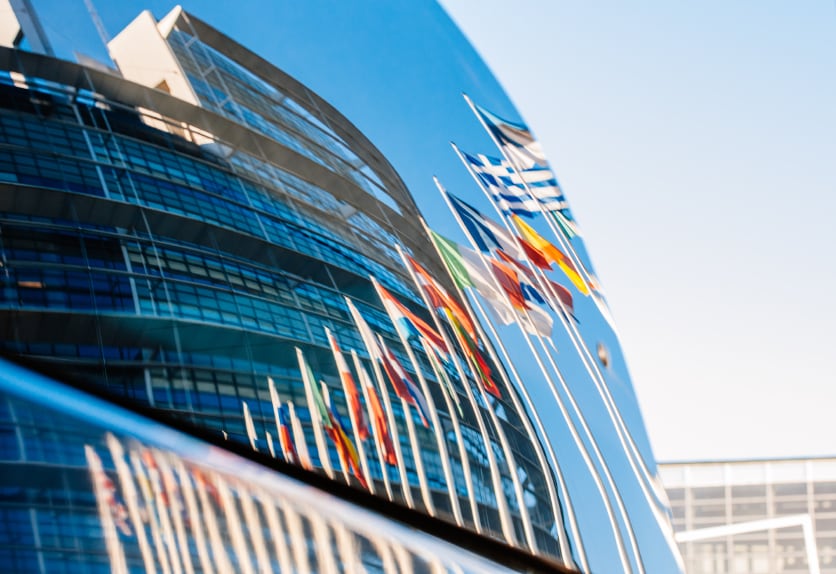The long-awaited report on the safety of insects for food and feed said: “The opinion identifies the uncertainties (lack of knowledge) related to possible hazards when insects are used as food and feed and notes that there are no systematically collected data on animal and human consumption of insects.”
In the risk profile published today, the authority concluded that studies on the occurrence of microbial pathogens of vertebrates as well as published data on hazardous chemicals in reared insects were scarce and further research to fill in these gaps was “highly recommended”.
Risks were identified in the opinion though, particularly concerning microbiological hazards introduced with certain farming and processing practices.
"The possible presence of biological and chemical hazards in food and feed products derived from insects would depend on the production methods, what the insects are fed on (substrate), the lifecycle stage at which the insects are harvested, the insect species, as well as the methods used for further processing," EFSA said in its press release.
It also addressed risks intrinsically associated with insects as part of their ‘lifestyle’. Yet, citing a 2013 Food and Agriculture Organisation (FAO) report, EFSA said pathogenic bacteria of insects were considered “harmless to animals and humans due to the fact that the hosts are so phylogenetically different”.
Echoing a report from the French Agency for Food, Environmental and Occupational Health & Safety (ANSES), EFSA wrote: “Bacterial hazards (and their toxins) for humans and animals related to insects will therefore mainly originate from a residential microbiota (natural or accidental) related to the rearing conditions (substrates and feed), handling, processing and preservation.”
Production in and outside Europe
Experts predict global production could be upped exponentially to 500,000 tonnes of insect protein per year within 10 years, mainly due to investment in the relatively new sector and rising prices of fishmeal and soymeal.
• Current annual production of insects as food in the Netherlands is calculated at about 15 tonnes of live insect weight.
• Thailand produces about 7,500 tonnes of crickets per year, with production expected to increase.
• Daily, South African firm Agriprotein produced 200–300 kg insect products a day in 2014, with investment since indicating it could produce up to seven tonnes of insect products a day (about 2500 tonnes per year).
You are what you eat
It pointed to differences in rearing techniques, for example in Kenya where black solder flies were fed human manure after composting. Chicken feed and animal manure were also used outside of the EU.
This would not be allowed within the EU where regulation prohibits the use of faeces and separated digestive tract content for farmed animals, which insects would come under. In the EU insects are mainly fed commercial animal feed and former non-animal and fish foodstuffs like fruit and vegetables.
EFSA said most of the scarce available data on pathogens concerned insects’ ability to act as a vehicle for pathogens like Salmonella and Campylobacter. It said this was likely to be lower than other non-processed sources of animal protein since active replication of the pathogens in the intestinal tract did not seem to happen in insects.
“Furthermore, the risk of transmission of these bacteria could be mitigated through effective processing.”
The risk profile, mandated by the European Commission’s DG SANTE back in May 2014, was originally due in June this year but EFSA said it needed more time.
The Commission requested the report to help it develop policy in the areas of novel foods and animal feed to reflect the increasing interest in using insects as food and feed.
The opinion will now be forwarded onto the Commission for review.
Novel opportunity?
The regulatory status around insects has been somewhat uncertain in the EU.
Luxembourg banned the sale of edible insects because there was no record of significant safe consumption in the EU before 1997, meaning they were an unauthorised novel food. Technically this should mean the same for all member states under the EU principle of mutual recognition.
However, other member states like Belgium and the Netherlands have taken a different approach with national rules.

The Belgian Scientific Committee of the Federal Agency for the Safety of the Food Chain wrote in an insect safety report last year: "Currently there are no specific regulations neither in Belgium, nor in Europe, on the breeding and marketing of insects destined for human consumption. The trade of a number of insect species destined for human consumption is however tolerated in Belgium."
Earlier this year a Danish supermarket pulled its first insect food products from shelves, fearing the product did not have the right novel food approval.
Belgium is one of three member states along with France and the Netherlands to conduct its own risk assessment of insects as food and feed.
Changes to the novel foods regulation, set for a European Parliament vote on October 27, could mean changes for the way insects are governed in Europe.
Under the proposals ingredients from countries outside of the EU, ‘third countries’, will be given greater ease to market since data showing a 25-year history of safe use in these countries will be valid.
According to a FAO report, insects are already part of the traditional diets of at least two billion people with over 1,900 species reportedly used as food. The report is the most accessed FAO report ever written with more than 1m downloads.
